-
 Bitcoin
Bitcoin $117300
1.93% -
 Ethereum
Ethereum $3866
5.21% -
 XRP
XRP $3.109
3.81% -
 Tether USDt
Tether USDt $1.000
0.01% -
 BNB
BNB $781.5
1.52% -
 Solana
Solana $173.0
2.95% -
 USDC
USDC $0.9998
0.00% -
 Dogecoin
Dogecoin $0.2181
6.31% -
 TRON
TRON $0.3403
0.93% -
 Cardano
Cardano $0.7683
3.91% -
 Hyperliquid
Hyperliquid $40.08
5.09% -
 Sui
Sui $3.742
7.38% -
 Stellar
Stellar $0.4152
4.69% -
 Chainlink
Chainlink $18.40
10.03% -
 Bitcoin Cash
Bitcoin Cash $580.6
2.21% -
 Hedera
Hedera $0.2543
4.25% -
 Ethena USDe
Ethena USDe $1.001
-0.01% -
 Avalanche
Avalanche $22.94
3.52% -
 Litecoin
Litecoin $121.8
2.24% -
 UNUS SED LEO
UNUS SED LEO $8.955
-0.41% -
 Toncoin
Toncoin $3.330
3.03% -
 Shiba Inu
Shiba Inu $0.00001270
2.97% -
 Uniswap
Uniswap $10.34
6.42% -
 Polkadot
Polkadot $3.805
3.86% -
 Dai
Dai $1.000
0.01% -
 Bitget Token
Bitget Token $4.429
1.80% -
 Cronos
Cronos $0.1495
4.65% -
 Monero
Monero $255.6
-9.08% -
 Pepe
Pepe $0.00001096
4.40% -
 Aave
Aave $282.9
7.85%
How to use the copy function of Gate.io contract? How to choose a reliable trader when copying?
Gate.io's contract copy function lets users mimic successful traders' strategies automatically, aiding less experienced traders in boosting profits.
May 06, 2025 at 03:29 pm
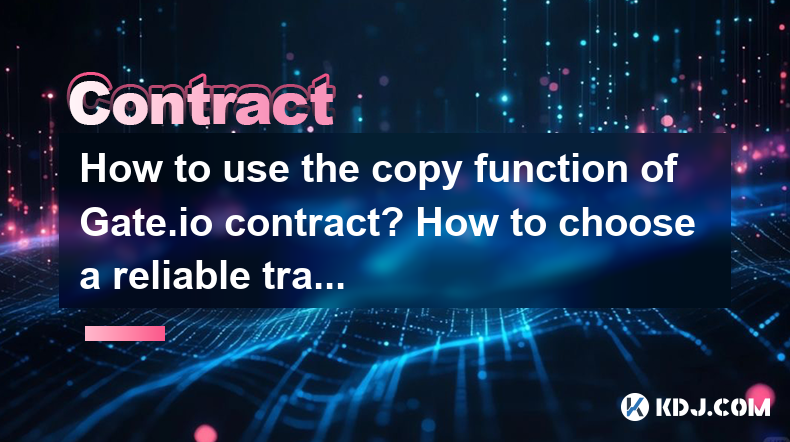
Introduction to Gate.io Contract Copy Function
Gate.io's contract copy function allows users to replicate the trading strategies of experienced traders automatically. This feature is designed to help less experienced traders benefit from the expertise of seasoned professionals. By copying the trades of successful traders, users can potentially increase their profits without needing to develop their own trading strategies. Understanding how to use this function effectively is crucial for maximizing its benefits.
How to Use the Copy Function on Gate.io
To start using the copy function on Gate.io, follow these detailed steps:
- Log into your Gate.io account: Ensure you have a registered and verified account on Gate.io.
- Navigate to the Copy Trading section: On the main page, locate the "Copy Trading" tab and click on it.
- Select a trader to copy: Browse through the list of available traders. Each trader's profile will display their performance metrics, such as profit rate, maximum drawdown, and number of followers.
- Review the trader's performance: Before deciding, carefully review the trader's historical performance, trading strategy, and risk management practices.
- Set up the copy trading parameters: Once you've chosen a trader, click on "Copy" and set your desired parameters, such as the amount you want to allocate to the copy trading and any risk management settings.
- Confirm the setup: Review your settings and confirm the copy trading setup. The system will automatically execute trades based on the selected trader's actions.
Key Metrics to Consider When Choosing a Trader
When selecting a trader to copy on Gate.io, it's essential to evaluate several key metrics to ensure you're choosing a reliable and profitable trader. Here are the critical metrics to consider:
- Profit Rate: This indicates the trader's overall profitability. A higher profit rate suggests better performance, but it's important to consider this alongside other metrics.
- Maximum Drawdown: This metric shows the largest peak-to-trough decline in the trader's equity. A lower maximum drawdown indicates better risk management.
- Number of Trades: The frequency of trades can give insights into the trader's activity level and strategy. A higher number of trades might indicate a more active trading approach.
- Win Rate: The percentage of profitable trades. A higher win rate is generally desirable, but it should be balanced with the average profit per trade.
- Average Holding Time: This shows how long the trader typically holds positions. Different holding times can suit different trading styles and risk appetites.
How to Evaluate a Trader's Risk Management
Risk management is a crucial aspect of trading, and it's vital to assess how well a trader manages risk before deciding to copy them. Here are some steps to evaluate a trader's risk management:
- Review the Maximum Drawdown: As mentioned earlier, a lower maximum drawdown indicates better risk management. Look for traders who have managed to keep their drawdowns minimal.
- Check the Use of Stop-Loss Orders: A trader who consistently uses stop-loss orders demonstrates a commitment to limiting potential losses. Check if the trader's profile mentions the use of such tools.
- Analyze the Risk-Reward Ratio: A trader with a favorable risk-reward ratio is likely to be more cautious and strategic in their trading decisions. Look for traders who maintain a balanced approach to risk and reward.
- Examine the Trader's Portfolio Diversification: A well-diversified portfolio can help mitigate risk. Check if the trader spreads their investments across different assets and markets.
How to Monitor and Adjust Your Copy Trading Settings
Once you've set up copy trading on Gate.io, it's important to monitor your trades and adjust your settings as needed. Here's how to do it effectively:
- Regularly Check Performance: Monitor the performance of the trader you're copying. Use the performance metrics provided by Gate.io to assess whether the trader is meeting your expectations.
- Adjust Your Allocation: If you're not satisfied with the trader's performance, you can adjust the amount you've allocated to copy trading. This can be done through the copy trading settings on Gate.io.
- Set Stop-Loss and Take-Profit Levels: To manage your risk, you can set your own stop-loss and take-profit levels for the copied trades. This allows you to limit potential losses and lock in profits.
- Review and Switch Traders: If a trader's performance declines significantly, consider switching to a different trader. Gate.io allows you to stop copying one trader and start copying another at any time.
How to Use Copy Trading Responsibly
While copy trading can be a powerful tool, it's important to use it responsibly to avoid potential pitfalls. Here are some tips for responsible copy trading:
- Start with a Small Allocation: When you're new to copy trading, start with a small portion of your investment capital. This allows you to test the waters without risking too much.
- Diversify Your Copy Trading: Instead of copying just one trader, consider copying multiple traders with different strategies. This can help spread your risk and potentially increase your chances of success.
- Stay Informed: Keep yourself updated on market conditions and the performance of the traders you're copying. Being informed can help you make better decisions about your copy trading strategy.
- Understand the Risks: Remember that copy trading, like any form of trading, involves risks. Be prepared for potential losses and never invest more than you can afford to lose.
Frequently Asked Questions
Q: Can I copy multiple traders at the same time on Gate.io?
A: Yes, Gate.io allows you to copy multiple traders simultaneously. This can help diversify your copy trading strategy and potentially reduce risk.
Q: How often should I review the performance of the traders I'm copying?
A: It's recommended to review the performance of the traders you're copying at least weekly. This allows you to stay informed about their performance and make adjustments as needed.
Q: Is there a minimum amount required to start copy trading on Gate.io?
A: The minimum amount required to start copy trading on Gate.io can vary depending on the trader you choose to copy. Check the specific requirements for each trader before setting up copy trading.
Q: Can I set my own stop-loss and take-profit levels when copy trading on Gate.io?
A: Yes, Gate.io allows you to set your own stop-loss and take-profit levels for the trades you're copying. This can help you manage your risk and protect your investment.
Disclaimer:info@kdj.com
The information provided is not trading advice. kdj.com does not assume any responsibility for any investments made based on the information provided in this article. Cryptocurrencies are highly volatile and it is highly recommended that you invest with caution after thorough research!
If you believe that the content used on this website infringes your copyright, please contact us immediately (info@kdj.com) and we will delete it promptly.
- Bitcoin Reserve, Gold Revaluation, Congress Considers: A New Era for US Financial Strategy?
- 2025-08-08 04:30:12
- KAITO's Momentum: Can It Reclaim Support Amidst Social Media Scrutiny?
- 2025-08-08 04:30:12
- Pi Coin's dApp and AI Potential: Building a Decentralized Future
- 2025-08-08 02:30:12
- Ruvi AI Takes the Lead: Outshining Dogecoin on CoinMarketCap
- 2025-08-08 02:50:12
- Cryptos Under $1: Is Ripple Still the King?
- 2025-08-08 03:50:12
- Cold Wallet, Bonk Price, ICP Price: Navigating the Crypto Landscape in 2025
- 2025-08-08 03:56:12
Related knowledge

What triggers a liquidation event on a Coinbase futures position?
Aug 08,2025 at 01:15am
Understanding Futures Contracts on CoinbaseFutures contracts on Coinbase allow traders to speculate on the future price of a cryptocurrency, such as B...
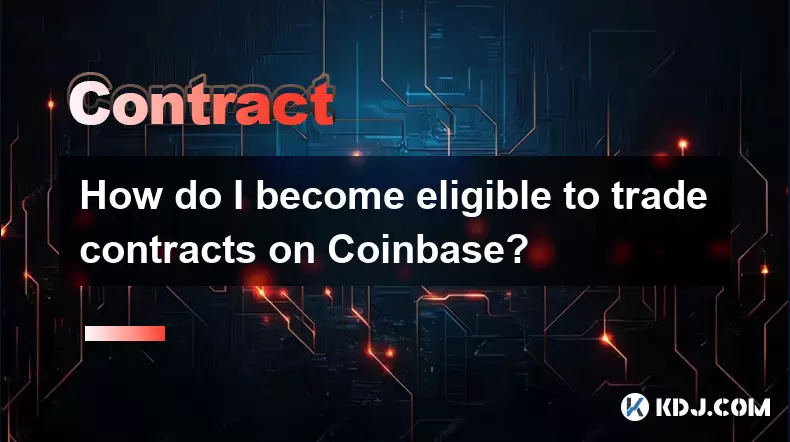
How do I become eligible to trade contracts on Coinbase?
Aug 08,2025 at 04:42am
Understanding Contract Trading on CoinbaseContract trading on Coinbase refers to the ability to trade derivative financial instruments such as futures...
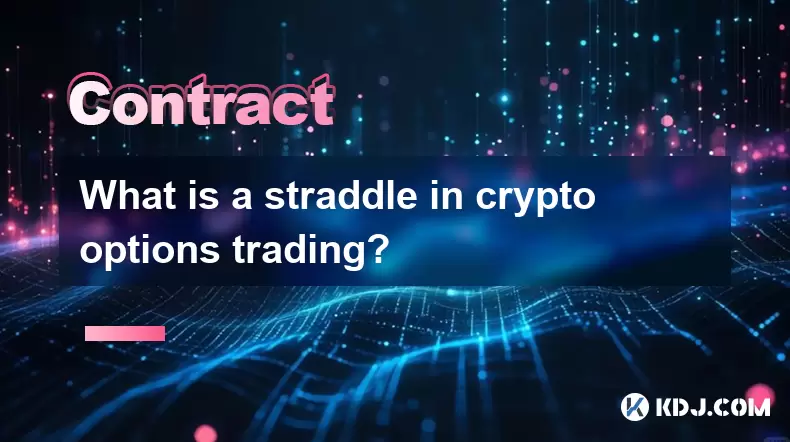
What is a straddle in crypto options trading?
Aug 07,2025 at 11:15pm
Understanding the Basics of a Straddle in Crypto OptionsA straddle is an options trading strategy used when a trader expects significant price movemen...
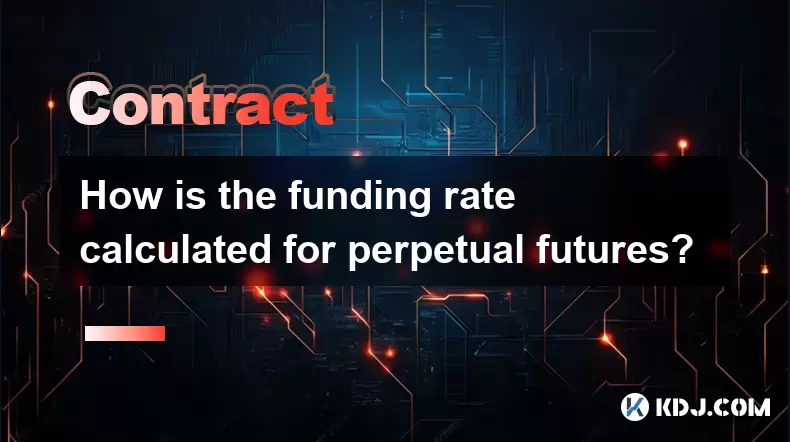
How is the funding rate calculated for perpetual futures?
Aug 07,2025 at 11:36pm
Understanding the Basics of Perpetual FuturesPerpetual futures are a type of derivative contract that does not have an expiration date, allowing trade...

What programming languages are used for smart contracts?
Aug 07,2025 at 06:07pm
Understanding Smart Contracts and Their Execution EnvironmentSmart contracts are self-executing programs deployed on blockchain networks that automati...
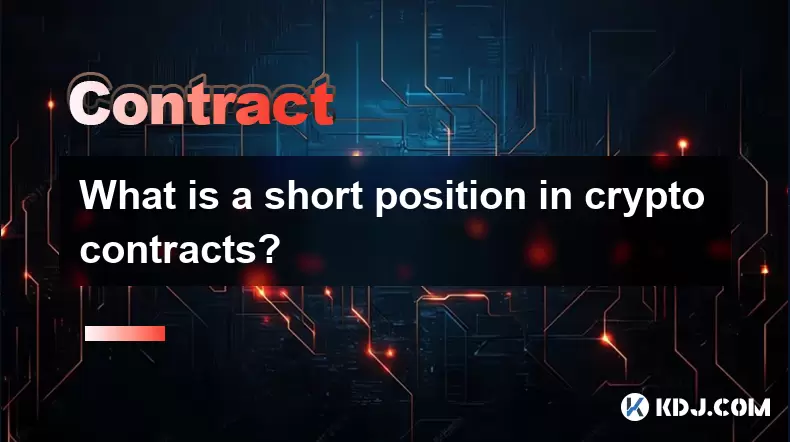
What is a short position in crypto contracts?
Aug 07,2025 at 11:42pm
Understanding the Concept of a Short Position in Crypto ContractsA short position in crypto contracts refers to a trading strategy where a trader prof...

What triggers a liquidation event on a Coinbase futures position?
Aug 08,2025 at 01:15am
Understanding Futures Contracts on CoinbaseFutures contracts on Coinbase allow traders to speculate on the future price of a cryptocurrency, such as B...

How do I become eligible to trade contracts on Coinbase?
Aug 08,2025 at 04:42am
Understanding Contract Trading on CoinbaseContract trading on Coinbase refers to the ability to trade derivative financial instruments such as futures...

What is a straddle in crypto options trading?
Aug 07,2025 at 11:15pm
Understanding the Basics of a Straddle in Crypto OptionsA straddle is an options trading strategy used when a trader expects significant price movemen...

How is the funding rate calculated for perpetual futures?
Aug 07,2025 at 11:36pm
Understanding the Basics of Perpetual FuturesPerpetual futures are a type of derivative contract that does not have an expiration date, allowing trade...

What programming languages are used for smart contracts?
Aug 07,2025 at 06:07pm
Understanding Smart Contracts and Their Execution EnvironmentSmart contracts are self-executing programs deployed on blockchain networks that automati...

What is a short position in crypto contracts?
Aug 07,2025 at 11:42pm
Understanding the Concept of a Short Position in Crypto ContractsA short position in crypto contracts refers to a trading strategy where a trader prof...
See all articles

























































































